Travelling to the UK is a great way to practise your English. It’s also a lot of fun! In this study guide, we’ll teach you some of the best travel phrases, local expressions and slang to make the most of your trip. Ready? Let’s hit the road!
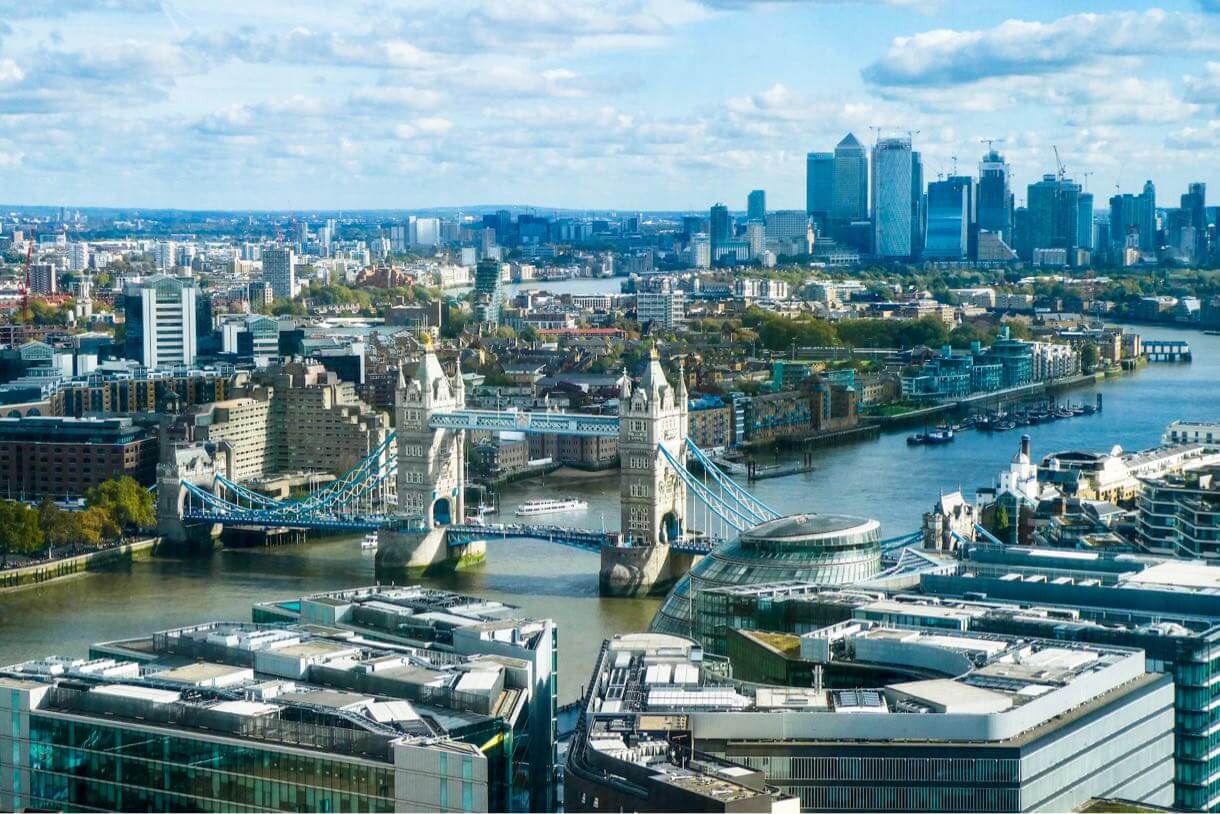
1. Greetings and expressions
2. Dining out
3. Transport and getting around
4. Essential British slang
5. How to be polite in English
One of the first words you’ll hear after stepping off the plane is ‘hello’. However, Brits use many different expressions to greet one another, and these are often less formal. It is worth learning several different ways to greet and address “the locals” because they may use phrases that do not appear in your textbooks!
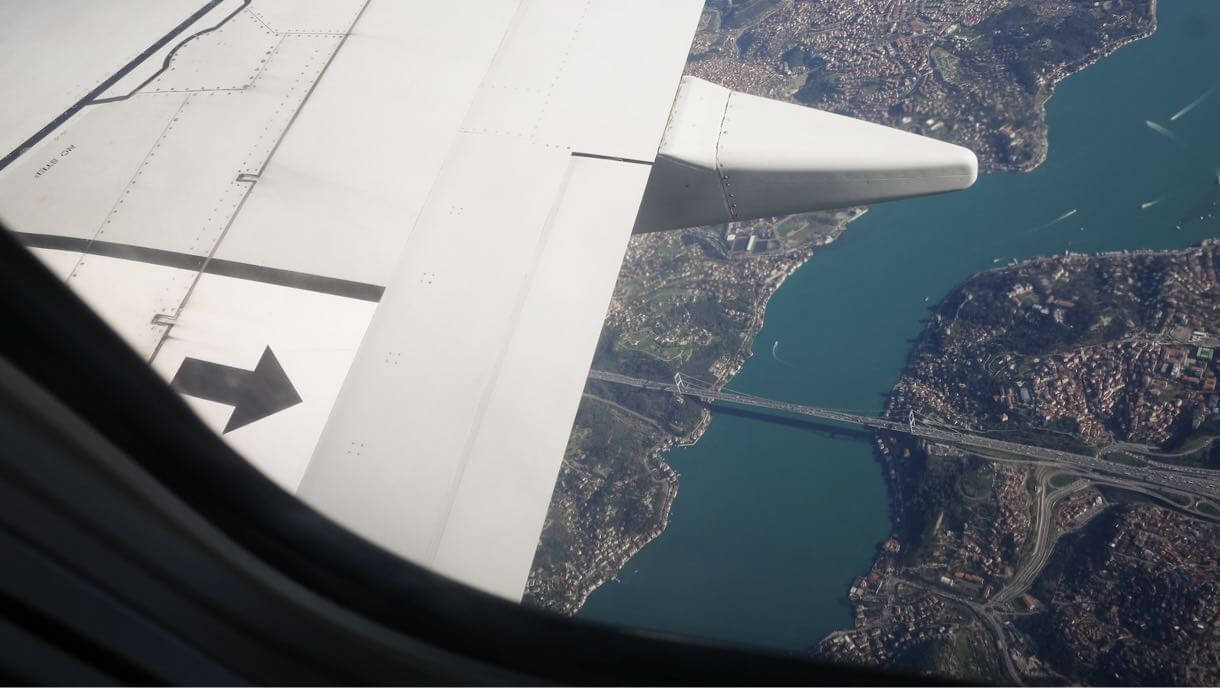
‘Hi / Hey / Hiya / Ay-up’ are informal ways of saying ‘hello’. These can be used in casual situations, such as when entering a cafe or greeting someone you already know. They are suitable for men and women of any age. It is not considered rude to use the word ‘hi’ to a stranger, despite it being informal.
‘Good morning’ and ‘Good afternoon’ are more formal variations of ‘hello’. You can say ‘good morning’ up until 12.00 (noon), then it is ‘afternoon’. These are often made informal by leaving out the word ‘good’. For example, ‘morning!’ or ‘evening!’. Following the same pattern, ‘goodnight’ can also mean ‘goodbye’, but is usually shortened to just ‘night’. If you want to be funny, you can use the famous children’s rhyme: “Goodnight…and don’t let the bedbugs bite”.
‘See ya / See you later / Bye / Cheerio / Ta-tar’ are all casual ways of saying ‘goodbye’. You can say these to your colleagues, friends or family, but avoid using them in more formal conversations.
‘How’re you?’ is a popular English phrase that often follows ‘hello’. A common reply would be ‘Fine, thanks!’, ‘Not bad, thanks! or ‘Good, cheers!’ (more informal). Sometimes this phrase can be used with people you do not know in public situations, for example, with a member of staff at a pub or cafe. In some cultures, you can expect to hear all about a person’s problems if you ask how they are doing, but in the UK this is usually just a polite addition to ‘hello’.
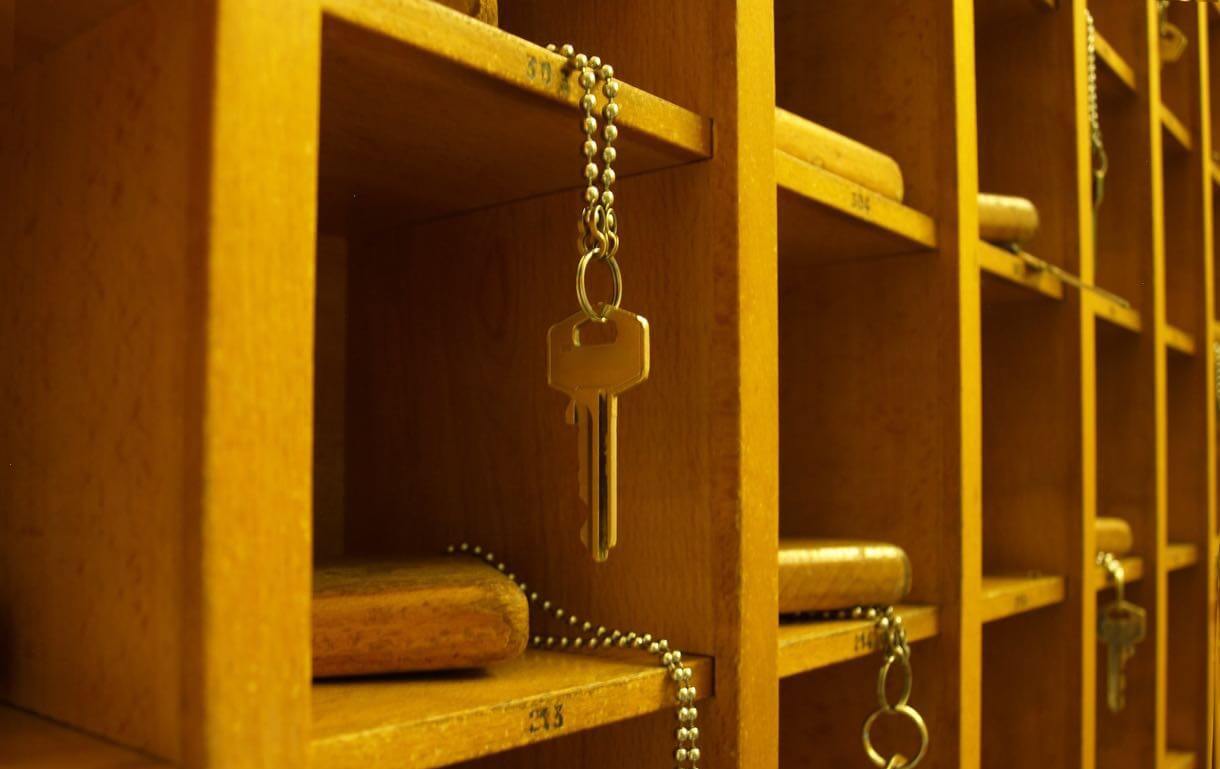 ‘Alright / Orate / What’s up? / Sup?’ are more informal ways of asking how somebody is doing. Only use these phrases when speaking with friends or family. ‘Alright’ is a short form of ‘Are you alright?’ and this can also be pronounced ‘orate’ or ‘alreet’ in the north of England. ‘Sup?’ is a short form of ‘What’s up?’ and has come to the UK from American English. ‘What’s up?’ can also be used if somebody is upset, in the same context as ‘What’s the matter?’.
‘Alright / Orate / What’s up? / Sup?’ are more informal ways of asking how somebody is doing. Only use these phrases when speaking with friends or family. ‘Alright’ is a short form of ‘Are you alright?’ and this can also be pronounced ‘orate’ or ‘alreet’ in the north of England. ‘Sup?’ is a short form of ‘What’s up?’ and has come to the UK from American English. ‘What’s up?’ can also be used if somebody is upset, in the same context as ‘What’s the matter?’.
Formal: Thank you
Neutral: Thanks
Informal: Cheers, ta
You may know the word ‘cheers’ in the context of drinking alcohol, but it can also be used as a casual way of saying ‘thanks’. It is quite an impersonal word and can be used after receiving directions from a stranger, or if your friend lends you a small sum of money. However, it wouldn’t be the appropriate expression of thanks if you’d just received a Christmas present from your mother. Think of ‘cheers’ as a light version of ‘thank you’ for everyday use.
When you’re on a bus and are close to your destination, you will need to press a red “stop” button to tell the driver that you wish to get off. As you’re stepping off the bus you can thank the driver for your trip by saying: ‘Cheers, mate’. You will hear local Brits doing this a lot in the UK.
These are all common forms of address and terms of endearment in Britain. ‘Mate’ is used everywhere, but the others are usually associated with particular regions of the UK. For example, ‘duck’ or ‘love’ are commonly used in the north of England and ‘pet’ is used further north still and around Newcastle. ‘Babe’ is more popular in the south, where the word ‘geezer’ can also be used instead of ‘mate’ (for a man).
Although these words are commonly used in Britain, they are unlikely to be in your textbooks because they are informal and region-specific. It is fine to use these terms when speaking to family, friends or even with the staff of shops and cafes. However, you should avoid using them in formal or work situations because this can seem rude or sarcastic.
As you probably know, Brits are famous for saying ‘thank you’ and ‘sorry’ all the time! Politeness is an important part of UK culture, and this is reflected in the language. ‘Sorry’ is a formal apology that can be used in many situations – for example, if you bump into somebody (which, if you’re in London you will do a lot!). It can also be used in the same way as ‘Pardon’. For example, if you haven’t heard what someone has said, you can say: ‘Sorry, I didn’t catch that’ or just ‘Sorry?’. This is politer than saying ‘What?’, which can be seen as rude.
‘Soz’ is the informal or slang version of ‘sorry’. You can use this when you’re talking to friends or family members, but not in formal situations or with people you do not know.
Britain’s multiculturalism means its food scene has expanded greatly over the years. From traditional fish & chips to Chinese takeaways – the UK has it all! These phrases will come in handy when you’re grabbing a bite to eat in London or elsewhere in Britain.
If you want to try some typical British cuisine and find yourself at the local fish and chip shop, you might be asked: ‘Do you want them opened or wrapped?’. This is a common way of asking whether you would like to eat your food now or later. Say ‘Open, please!’ if you plan to eat while you walk or perhaps in a park nearby. Say ‘Wrapped, please!’ if you would prefer to eat back at your hotel or apartment. Fish and chip shops usually serve their food with small plastic or wooden forks. If you are not given one of these with your food, you can say: ‘Can I have a fork please, mate?’.
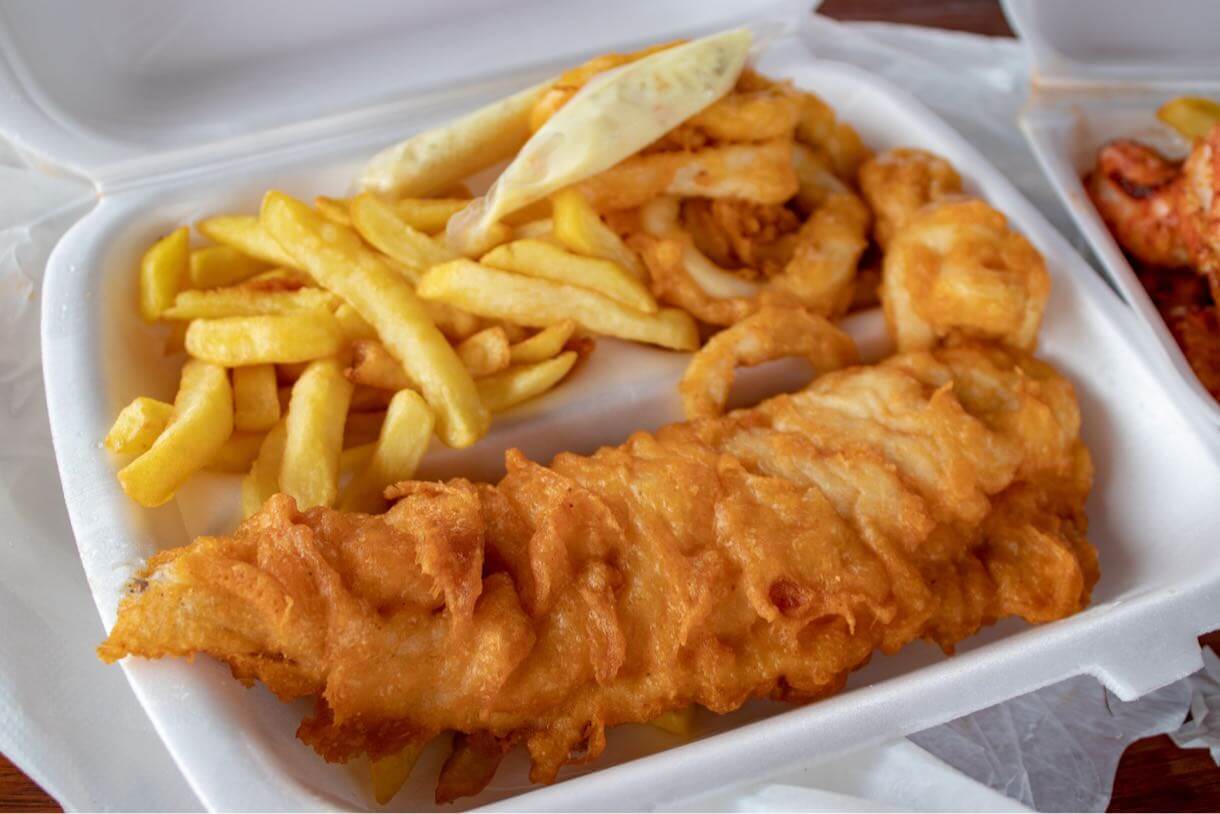
Some coffee shops and small cafes have two price lists; one for customers sitting or eating in, and another for those ordering food or drinks to take away. It’s usually a bit more expensive to sit in because you can then use the facilities (toilet, wifi, etc.). If you want to have your drink inside the cafe, you can say: ‘Can I have a coffee to sit in, please?’. However, if you’re on the move and just need a quick pick-me-up in the form of caffeine, then you can say; ‘Can I have a large cappuccino to take away, please?’. You may also hear Brits using American versions of these phrases, like: ‘A medium latte to go, please!’ or ‘Can I get this pizza to take out, please?’ (British English: ‘to take away’).
If you enter a cafe and are greeted with a sign saying “Waiter service” (or “Table Service”), you should find a table, sit down and wait to be served. Being “waited on” means the staff will bring your food directly to you, so you don’t have to go to the counter to order. This is a common practice in most restaurants and some cafes, but not in fast food chains. Pubs can go either way, but many will expect you to order at the bar where you can also buy drinks. If in doubt, look on the front of the menu for information or ask a member of staff: ‘Excuse me, should I order at the bar or will someone come over?’.
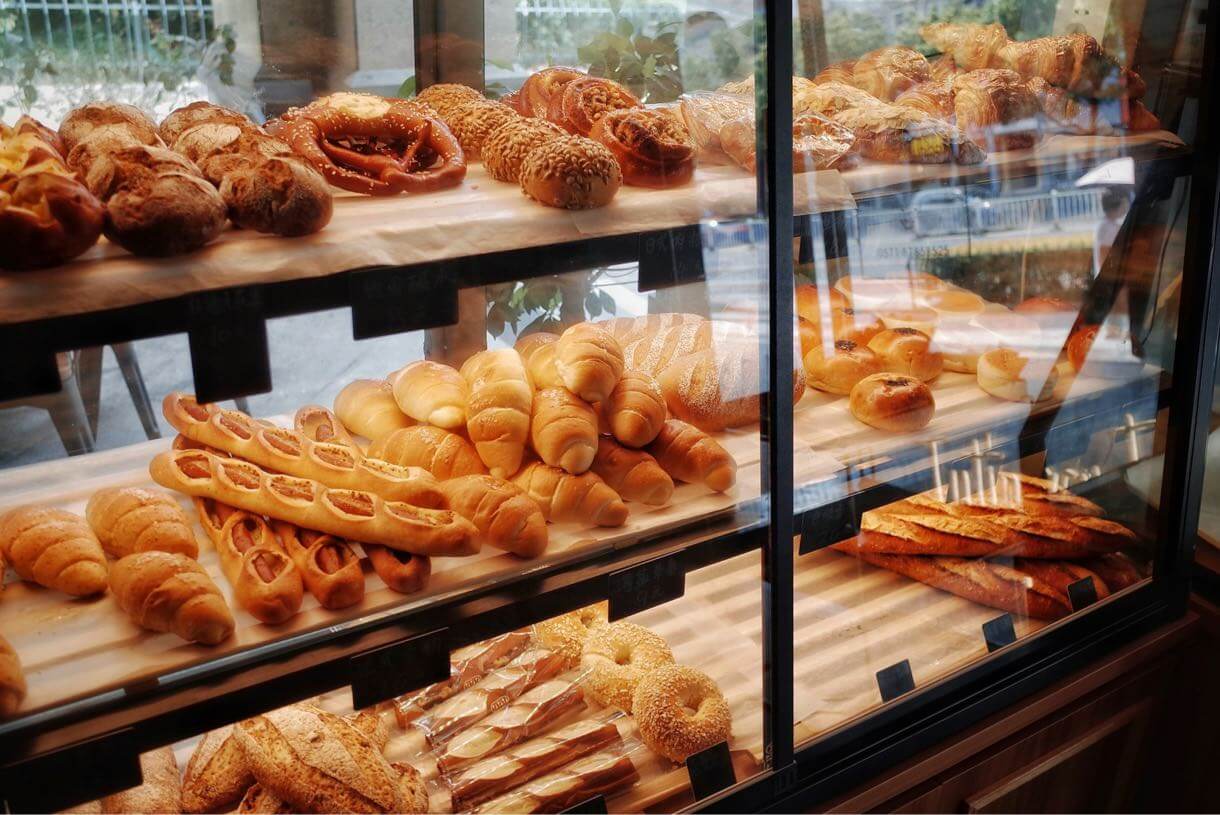
When ordering food in English, you need to make sure you are using polite constructions. For example, ‘I would like…’ or ‘Could I please have…’ instead of ‘I want…’. If you sit down for 5 minutes and just listen to how locals communicate with staff at restaurants and cafes, then you will have a better understanding of the usual exchanges. Take a look at the table below for some common vocabulary and phrases:
| Question (customer) | Reply (waiter) |
| Can I book a table, please? | Sure. How many (people) is it for? |
| Can we have table for 1/2/3/4, please? | Of course! Is that table by the window ok? |
| Can we have the menu, please? | Yes, I’ll bring one over for you now. |
| Can we have a few more minutes, please? | Sure. Would you like to order some drinks first? |
| What do you recommend? | Our chef’s specials are up on the board over there. |
| Can we share the… | Sure. Would you like it on two separate plates? |
| I would like the… / Could I have the… | I’m afraid we’re out of…, but we do have… |
| Excuse me, can we order more food/drinks please? | No problem. I’ll be right over. |
| Have you got any ketchup and mustard? | Yes, I’ll bring some over for you with your meal. |
| Can I have some salt and pepper, please? | It’s just there behind your menu! |
| Can I just have a plain burger, please? | A plain burger with nothing on. Sure. |
| Sorry, this is not what I asked for! | Terribly sorry about that! I’ll check with the chef. |
You’ll notice that Brits use the word ‘please’ at the end of requests and some questions. It is important that you also make an effort to do this when speaking English so that you do not appear rude. Customer service in the UK is usually good so don’t be afraid to ask for assistance from staff. In London, many non-natives work in restaurants and cafes so you won’t always be communicating with Brits.
When you have finished your meal, call the waiter or waitress over to your table with a raised hand or by making eye contact and lifting your head. You can ask: ‘Can we have the bill, please?’. If you are sharing the cost of the meal, use one of the following phrases: ‘Can we split it between us, please?’ or ‘Can we pay separately, please?’. You will then need to chip in your share of the cash or say how much money should be charged to each card.
Most places will have a card machine. However, some small cafes may only accept cash, in which case there should be a sign clearly stating this. It’s a good idea to carry some cash with you, but to make most of your purchases by card. If you are unsure of the possible payment methods, you can ask: ‘Do you accept cards?’ or ‘Do you take card?’ (more informal).
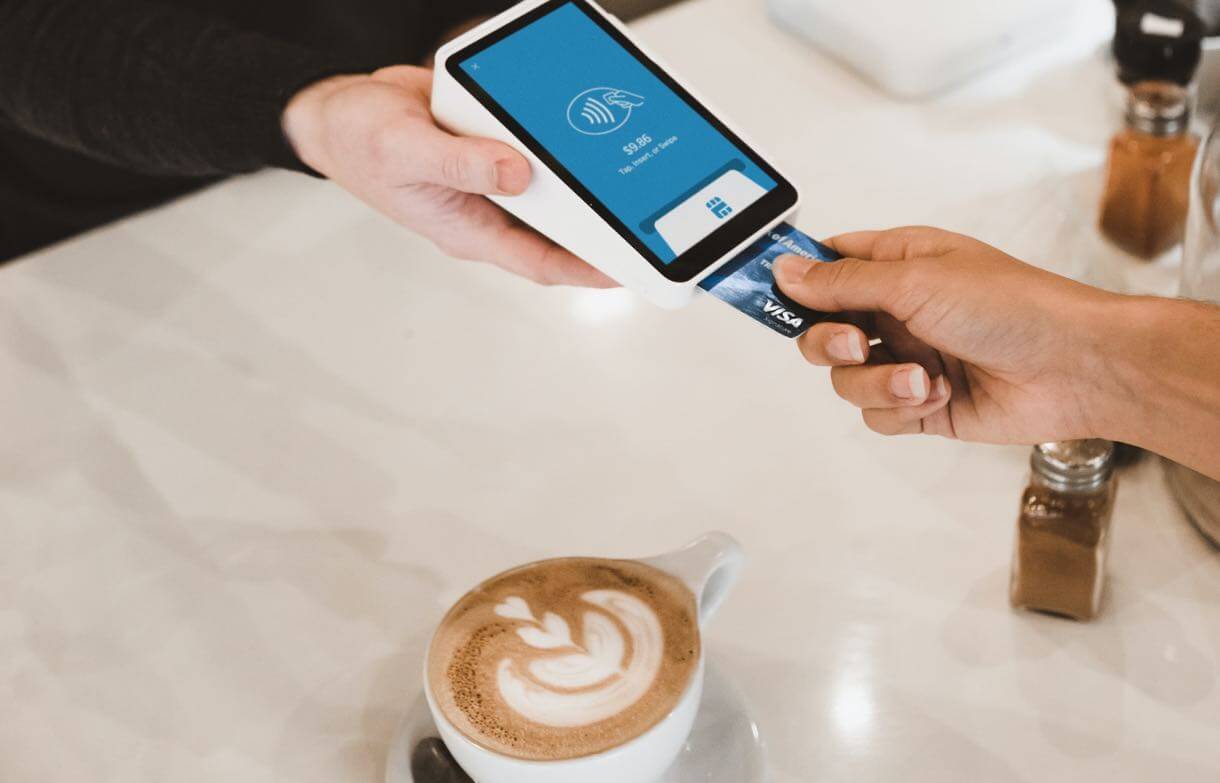
The most convenient way to pay for things nowadays is with a “contactless” card or with Apple Pay. If you use a smart phone, you can connect your debit or credit card to your mobile and pay for low value items with one easy tap. Paying with “contactless” enables a quick transaction. All you have to do is hold your card over the card machine, rather than using the old fashioned chip and PIN method. If you have a small wifi icon on your bank card, then your card is “contactless”. Before you pay for your food and drink with a card machine, you can ask: ‘Is it contactless?’.
It’s usual in the UK to leave a tip when you pay for a meal. This is about 10-15% in London, but may be a little less elsewhere in the country. If you have really enjoyed your meal and the service has been great, then you may wish to leave a more generous tip. Leaving no tip is generally considered rude or can be taken as a sign you are disappointed with the food or service. Before you leave a tip, make sure that the cafe or restaurant hasn’t already included a service charge on your bill (usually about 12.5%).
In pubs, you can tip the bar staff by saying: ‘Have a drink on me!’. Most of the time, they will pocket the cost of one standard drink rather than consuming alcohol at work (but there are exceptions!). You can also tip your taxi driver by saying: ‘Keep the change, mate!’ or ‘Let’s just call it a tenner!’ (£10).
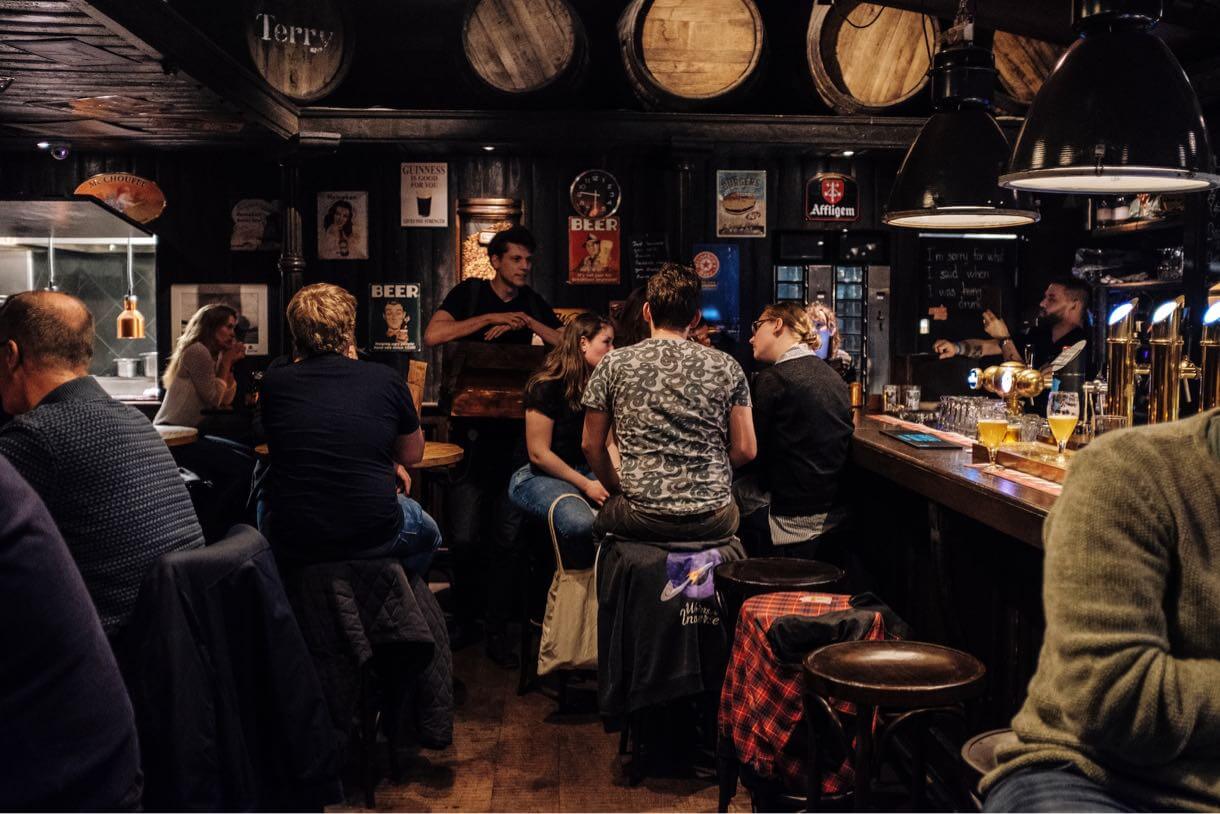
If you’re in an old pub in London, you may hear some “regulars” (locals who often visit the place) ordering drinks and then asking the bar staff to “put it on my tab”. A tab is the total of your drinks at the end of the evening. If you’re going out with a large group and know that you will all be ordering more than one drink, then it might be worth “opening up a tab”. At the end of the night you can ask to “pay off your tab”, which will be the total cost of all your drinks. Most pubs will ask for a bank card to keep behind the bar as a deposit on your tab.
For more useful travel phrases about dining out, take a look at this mini guide from the BBC Learning English website.
Now that most of us have Google Maps on our phones, asking for directions may seem a little old fashioned. However, you may wish to learn some phrases to help you get around and use public transport in the UK. If you’re lost or just want to know the fastest way to get to the best sights, then locals may know some secrets that don’t show up in Google search results! You’ll find that most Brits you meet are more than happy to point you in the right direction and offer some friendly advice.
If you want to get to know a city, explore it on foot! This will give you a chance to see all the local places as they are enjoyed by its residents. You might even discover some “hidden gems” off the beaten track (away from other tourists). Take a look at these travel phrases to help you navigate the streets:
| Question | Reply |
| How do I get to…? | Over the bridge, turn right along the embankment. |
| Do you know where X is? | Yeah, it’s just down there, mate! (pointing) |
| How far is it to…? | About 10 minutes if you cross by the (traffic) lights and keep going. |
| Is it far to…? | Yeah, it’s a fair walk. / No, it’s pretty close. |
| Am I going the right way for…? | Yep, just keep going! / Nope, you want to go left over there and then down to the end of the road. |
| Is it walkable from here? | Yeah, it’s fairly close. You can walk it in 5 minutes. |
| Where’s the nearest…? | Head up the road and it’s on your left. |
| Could you recommend a decent pub round here? | Sure. The Nag’s Head is good. It’s just down that street on the right. |
Brits often use the words ‘up’ and ‘down’ when giving directions. For example, ‘up the road’ or ‘down the street’. This can be confusing because the speaker doesn’t always mean ‘uphill’ or ‘downhill’. If you hear these words, you should take them to mean ‘along’ and pay attention to the direction shown by the speaker.
Public transport in most big cities offers an affordable way of getting from A to B. Start by asking: ‘Where’s the nearest bus stop?’ or ‘Where’s the bus station?’ (for coaches to other cities too). Pick up a bus timetable from a stand or tourist information centre so you know the route. On London buses, you can pay using a contactless bank card or with a Visitor Oyster Card. If you are planning a longer stay, you can buy a travel card that is valid for 7 days. A single standard ticket costs £1.50, though prices tend to increase year on year.
To stop a bus, you must be standing at a bus stop. Put out your arm to tell the driver you wish to get on. When you get on the bus, request your ticket with: ‘Can I have a single to X, please?’. If you don’t know the route, you can ask: ‘Can you please let me know when it’s time to get off?’. It may be best to sit downstairs closer to the driver on a double-decker bus, if you need help finding your stop. When you reach your destination, you can either say ‘Next stop, please mate!’ or ring the bell by pressing one of the red “Stop” buttons. On some buses you will then see an illuminated sign saying “Bus Stopping”.
For more information about bus travel in London, see this short guide.
London’s iconic “Tube” (or underground) is a great way of getting around the capital. It is the only real underground system in the UK, although some other cities have trams or over-ground trains they call “The Metro”. The Tube is the oldest underground system in the world and you will notice that its tunnels are small and its trains are often tight on space (especially at rush hour!). Navigating the Tube can be a nightmare for tourists so it’s best to pick up a map at the entrance to any station and then plan your route in advance. This Guide to the London Underground provides all of the information you need.
Most people buy tickets from a machine, but each station still has a small ticket office with a member of staff to assist you. If you are confused by the machines, queue up and use this option. You may find the following exchanges of use:
| Question/Request | Reply |
| Can I have a single/return to X, please? | That’ll be £10.40, please. |
| Can I put £10 on my Oyster Card, please? | Thanks. That’s topped up for you now. |
| What time’s the next train to X? | They run every 5 minutes until midnight. |
| Where do I change for King’s Cross Station? | You want to get off at London Bridge, mate! |
Have you seen the t-shirts with the phrase “Mind the gap”? This expression is famous and you’ll notice it a lot when using The Tube. It means: be careful of the space between the train and the platform – don’t fall down!
Another London icon is the famous “black cab” (or taxi). Today, cheaper alternatives (like Uber) do exist and you can even order taxis using a mobile app with GPS. However, a trip to the British capital wouldn’t be complete without at least a short ride in a black cab! Cab drivers (or “cabbies”) are renowned for their banter (humorous small talk) and extensive knowledge of the city’s streets.
You can hail a cab from the roadside if its yellow/orange light is on. To do this, put your arm out and wave to the driver. Get into the cab and give the cabbie your destination: ‘The Hilltop Hotel via Piccadilly, please mate!’. The word ‘via’ is used to explain which route you wish to take and whether multiple stops are required. If you don’t have any cash on you, then you can ask: ‘Can we stop at a cash machine on the way, please?’.
Cabs can be very expensive, especially in London. Watch the meter to see the current fare. When you get into the taxi, the meter will not start on zero because a minimum charge is added immediately. Many taxis now accept cards so ask the driver if you wish to use this method of payment.
For more practice, check out this short series from the British Council about travel in London.
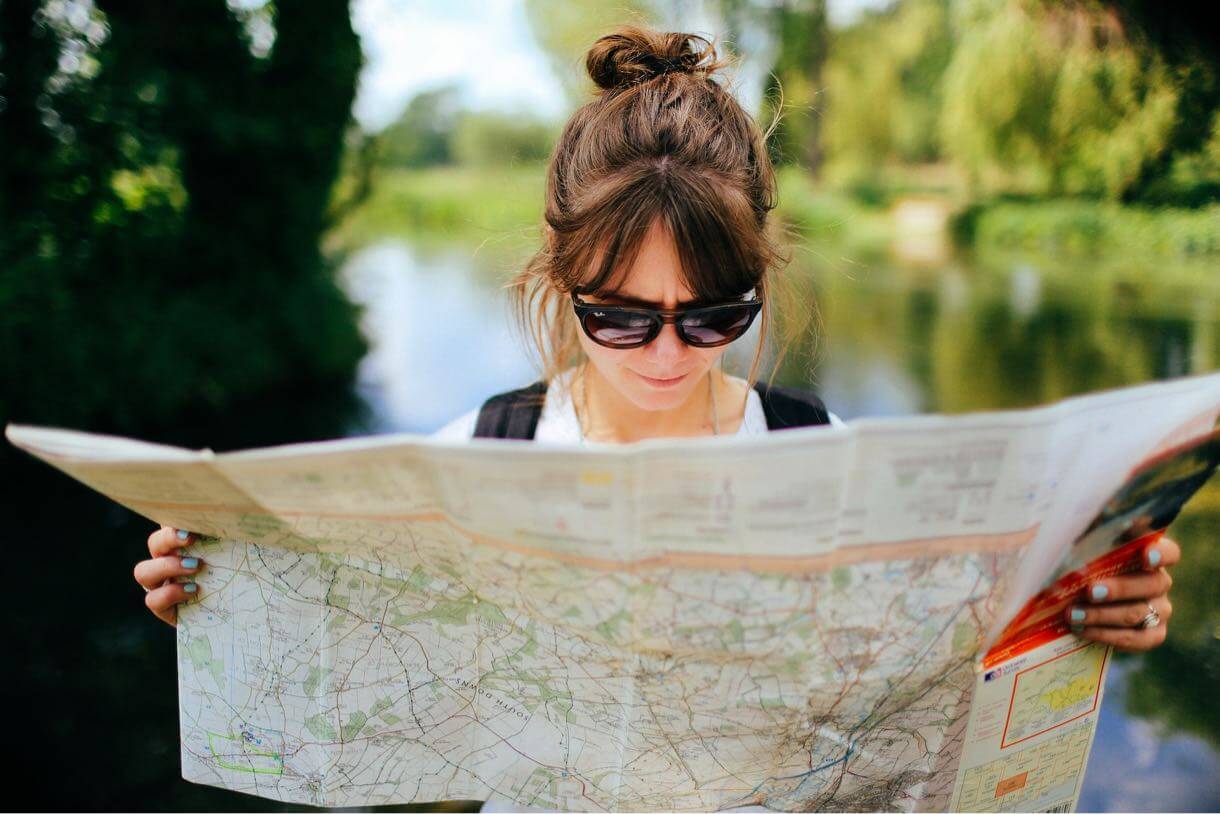
If you want to take your English a step further, why not learn some informal words and expressions used by the locals? These will help you to understand more of the conversations taking place around you. Using slang can also be a lot of fun, but make sure you know how and when to use it properly! Check out this short list of 10 UK slang words that will make you sound more like a Brit:
| Slang word | Meaning | Example |
| Dunno | Don’t know (contraction) | I dunno what time he’s back. |
| Brill | Brilliant | That new cafe round the corner is brill! |
| Knackered | Very tired | I’m knackered after that 10 mile run! |
| Gutted | Very disappointed | Arsenal lost 5-0. I was gutted, mate! |
| Geezer | Southern form of ‘mate’ (friend) | Who’s that geezer over there? |
| Dodgy | Suspicious, criminal, not right, not working properly | That neighbourhood’s really dodgy at night. |
| Boozer | Pub | You coming down the boozer later? |
| Bog | Toilet | Where’s the bog? |
| Cuppa | Cup of tea | I could murder a cuppa! (really want one) |
| Footie | Football | Fancy watching the footie tonight? (want to) |
If you would like to learn more about this topic, take a look at this list of British English slang terms.
Brits are famous for being polite, but this means they just use the right words and expressions to suit the situation. Anyone can learn to sound polite in English by using set phrases and a less direct style of communication. Let’s look at some examples:
Use additional modal verbs instead of just saying ‘give me…’ or ‘I want…’. For example, say: ‘I would like…’, ‘May I have…’, and ‘Could/can I borrow…’. These phrases sound less like demands and more like polite requests. You can also add the word ‘please’ if you want to be very polite: ‘Could I please have…’.
If you don’t understand someone, it’s fine to ask them to repeat what they have said. To do this politely, say: ‘Sorry, I didn’t quite catch that!’, ‘Could you repeat that, please?’ or ‘I’m sorry, but I don’t understand.’. It may also be a good idea to ask the person to speak more slowly: ‘Could you speak a little slower, please?’ or ‘My English isn’t great. Would you mind speaking a bit slower, please?’.

Brits often say ‘sorry’ even when they are not to blame! For example, if a person bumps into someone else in the street, BOTH Brits will apologise (not just the one who was at fault). This can be very confusing if you are a visitor to the UK. In this situation, the second ‘sorry’ just means ‘It’s fine – no problem’. By saying ‘sorry’ in this context, you are not pointing the finger of blame at the other person.
Being apologetic is another important feature of British communication. This means you will hear Brits using the following phrases a lot: ‘I’m sorry about…’, ‘Terribly sorry about…’, ‘Sorry, I’m late!’, ‘I’m afraid that…’, ‘Forgive me for…’I shouldn’t have…’. Listen carefully to how the local Brits speak with each other and then try some of these phrases yourself.
Brits use the words ‘please’ and ‘thank you’ more frequently than most other nationalities. This means that visitors to the UK can seem rude if they forget to say these words with the same frequency. All polite requests should include ‘please’ and you should thank other people each time they do something for you. For example, take a look at this short exchange between a customer and a shop assistant:
– Can I have a National Lottery scratch card, please?
– That’ll be £2.50, please.
– Here you go.
– Thanks. That’s 50p change.
– Ta, mate. Thanks!
One stereotype of the British is that they have an eccentric sense of humour. It’s certainly true that humour plays an important role in UK culture. Visitors often complain that they never know when Brits are being serious and when they are “having a laugh” (joking)! If in doubt, it’s best to assume the other person is probably joking. Brits hate confrontation, especially in public. Therefore, in uncomfortable situations, you are likely to see them making jokes to lighten the mood.
For more information about etiquette in the UK, check out this post on how to be polite in English.